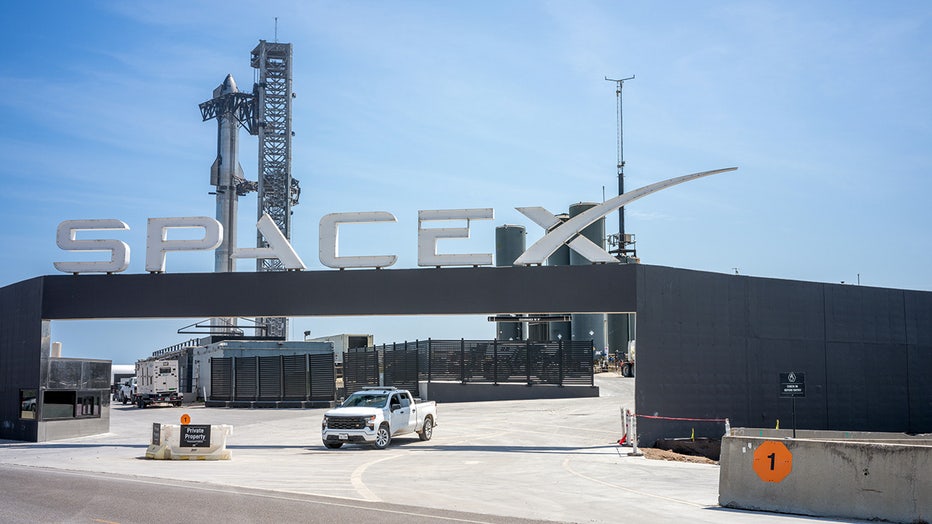SpaceX Starship reaches space but does not survive reentry in successful test flight

SpaceX Starship blasts off from Texas
SpaceX's Starship rocket got off to a good start on its third test flight, successfully reaching space for the first time.
BOCA CHICA, Texas - For SpaceX, the third time was the charm. Starship and its Super Heavy booster rocket – the most powerful ever flown – blasted off from south Texas this morning on an uncrewed suborbital test flight and, for the first time, made it to space. Though Starship apparently did not survive reentry, the company considered the mission a success.
The rocket’s two previous launches ended with in-flight explosions, but this attempt saw a seemingly flawless liftoff through the fog, followed by successful stage separation before the Starship craft reached space. The only apparent launch issue came as the booster rocket prepared to return to Earth; its engines did not all re-ignite and SpaceX confirmed a "hard splashdown" for the first stage in the Gulf of Mexico.
The Starship upper stage spent about an hour in space, testing its systems and providing spectacular views of its first-ever atmospheric reentry. As glowing red-hot plasma built up around the spacecraft, its signal faded and dropped out. Moments later, the company's webcast hosts confirmed the craft had not survived.
Still, it was a big step forward for SpaceX's ambitious program to build not only the most powerful rocket in the world, but a fully reusable one at that.
"The further we can fly, the more data we can get. That’s always the biggest win," SpaceX host Kate Tice offered as the mission concluded.
What is Starship?
Starship is SpaceX’s reusable spacecraft, designed to carry over 100 tons of cargo – and, eventually, people – to space and then fly back to Earth to be launched again.
The Starship spacecraft is launched atop SpaceX’s new Super Heavy booster, a 33-engine monstrosity – also reusable – that is more powerful than even NASA’s Saturn moon rockets of the 1960s. Fully stacked, the Starship combination reaches 397 feet high.

The Starbase facility is seen a day before Starship Flight 3's scheduled launch near Boca Chica beach on March 13, 2024 in Brownsville, Texas. (Photo by Brandon Bell/Getty Images)
The rocket is being developed to reduce the cost of launches and possibly take humans to the moon and Mars. NASA plans to use Starship as its lunar lander during the upcoming Artemis missions later this decade, landing astronauts on the moon and then carrying them back up to the Orion capsule.
What happened during the first two Starship launches?
The first Starship launch, back in April 2023, ended with an in-flight explosion just before stage separation. An investigation later determined that leaking fuel lines inside the booster had caught fire, which ultimately led to the loss of communication to the booster engines and control of the rocket.

Watch: SpaceX?s giant Starship rocket launch attempt ends with explosion
Starship -- SpaceX?s giant new rocket that aims to send people to the moon and, ultimately, to Mars -- blasted off on its first test flight but exploded minutes after rising from the launch pad on April 20, 2023.
Meanwhile, the launch blasted sand and debris from the launch pad, creating a technical and an environmental hazard. The company installed a water-deluge system for the second flight to keep that from happening.
That second flight, though, also ended with an explosion, but later in the ascent. Unlike the first mission, all of the Raptor engines fire up and continued to burn through stage separation. Moments later, one engine "failed energetically" – likely due to a liquid oxygen filter blockage – leading to an explosion that destroyed the booster.

SpaceX tries again to launch Starship rocket
The booster sent the mega rocket toward space, but communication was lost eight minutes after liftoff and SpaceX declared that the vehicle had failed.
The Starship upper stage continued toward orbit until a leak during liquid oxygen venting led to a fire, cutting power to all six engines, which in turn activated the vehicle’s automatic self-destruct.
SpaceX says these failures were part of their learn-as-you-fly philosophy and they implemented a number of upgrades for the third flight.
No astronauts were aboard any of the flights.
Third Starship flight
In this third mission, SpaceX hoped to not only get Starship to space and back – a successful ascent and then descent for both stages – but also accomplish multiple goals along the way.
Reaching space was the primary goal. That allowed engineers to test a variety of systems, including the craft's new payload door, and demonstrate propellant transfer while the upper stage was coasting.
A planned first-ever in-space reignition of the craft's engines did not happen; the reason was not immediately clear.
Engineers were also eager to see how the craft performed in high-speed flight as it reentered the atmosphere at 17,000 mph, and how its thermal protection tiles – similar to those used on the space shuttle – protected it from the heat of reentry.
While the onboard video cameras provided stunning views of the fiery plasma building up around the reentering craft, the Starlink-powered video signal eventually cut off at the same time as the telemetry data stream dropped out, signaling a likely loss of the vehicle. SpaceX later confirmed that Starship did not survive reentry.
The test-until-you-fail process will continue for SpaceX, using lessons learned from the success and failures on this latest flight.
"More Starships are ready to fly, putting flight hardware in a flight environment to learn as quickly as possible," the company noted in a pre-flight update. "Recursive improvement is essential as we work to build a fully reusable launch system capable of carrying satellites, payloads, crew, and cargo to a variety of orbits and Earth, lunar, or Martian landing sites."

